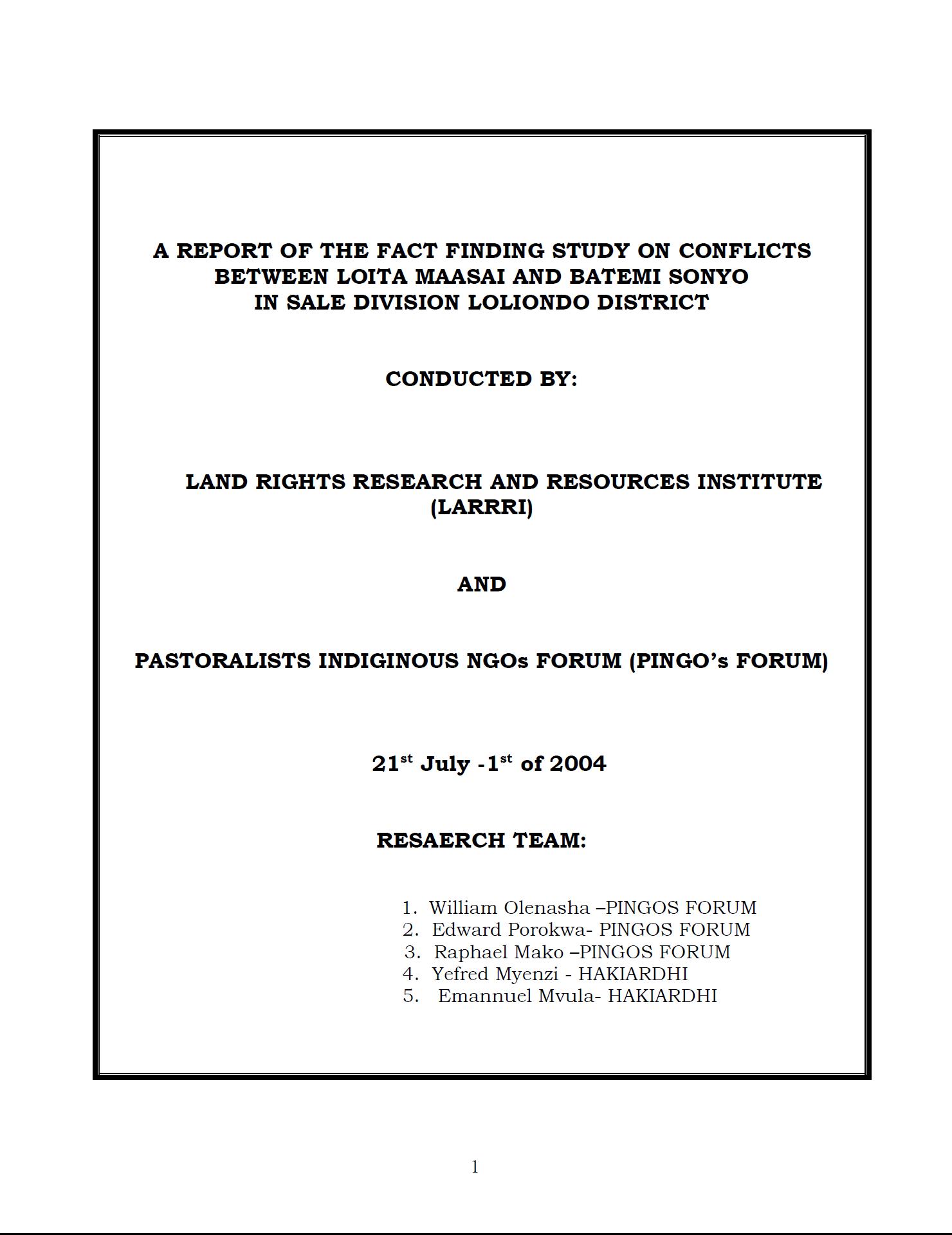Resource information
The conflict for which the research team has taken immediate measures to find its causes and give recommendations for its complete arrest, took place from the 1st-14th July 2004 in the frontiers of Engusero Sambu and Kisangiro villages, in the divisions of Loliondo and Sale, respectively, both of Ngorongoro District. Ngorongoro is the third division in the District. One person was killed and another injured in the subject fighting.
The district is inhabited by the Maasai pastoralsits who constitute the majority and the Sonjo agro-pastoralists who constitute the minority. The two groups have a prolonged history of hostile relations and tensions.
The history behind the existing conflict goes back to 1975 when the most intense fight between the two tribes was first recorded. Many lives were claimed in a fight that was triggered by cattle thefts. The conflicting situation was temporary arrested in the early 80‟s when the late Edward Moringe Sokoine (the then prime Minister for United Republic of Tanzania) mediated the same by using traditional means of conflict resolution.
The conflict between the two sides gathered new momentum after 1990 when a highly disputed land demarcation and issuance of title deeds to some villages, was done by ADDO, KIPOC, IUCN and SRCS. It however blew up in 1995 in an occasion where a Maasai young man stole a shoe of a Sonjo trader in a local market, an incidence that quite surprisingly exploded in bloodshed of a magnitude not precedented to date.
The research team has managed to come with a score of causes that can be said to underlie the conflict. These are no less than poor management and administration of land; ethnic hatreds; scarcity of land and population growth; diversification of livelihoods; proliferation of small arms; competition over the Kenyan border; and the role of politicians and the government bureaucracy.
From the findings and the causes of the conflict, the team has come up with recommendations deemed necessary to arrest the conflict both temporarily and permanently. These include, dissolution of the existing committee of councillors; re-demarcation of boundaries; initiation of a traditional dialogue; awareness of the substance and procedures of the new land acts; joint of land use plans; Implementing the dispute settlement mechanisms of the new land laws; control of illegal immigrants from Kenya; disarmament; and the building of police posts in the conflict zone.
Finally it is concluded that, prevention is better than cure. The government and other stakeholders should therefore address potential conflicts timely before they escalate into large-scale wars that claim innocent lives and which destroy valuable property that is difficult to replace.



